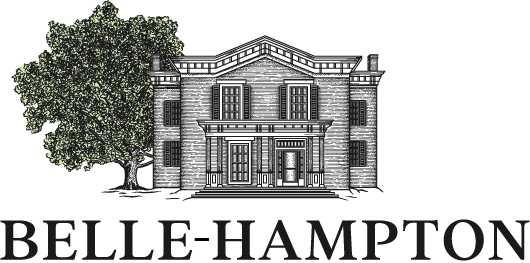Leaving a Legacy: Developing a Family Strategic Plan
Although most family patriarch’s have wills and many have worked with a financial advisors or family offices on estate plans, a typical family doesn’t cultivate a strategic plan for future generations. Consider the statistic, 70% of all wealth transfers fail after one generation and 97% fail after three generations. That nest egg you built over your life, no matter how big or small, disappears shortly after you do. Historically 86% of families consider it more important to leave values and life lessons as inheritance. Unfortunately, financial advisors don’t ordinarily touch on non-financial legacy. For those who have a plan, 90% believe it doesn’t deal with their goals, wants and objectives. But is it essential to have a strategic plan, how is one created and who do you turn to for advice?
First consider what it means to FAIL in your financial and non-financial legacy. Your wealth is gone after the next generation leaving no monetary security for future offspring. Because this next generation is typically regarded as “lottery winners” not knowing how to handle the windfall, they end up broke. Ironically lottery winners and the transfer of wealth both have a 70% fail rate. The ineffectiveness of the legacy transfer is attributed to the family culture which lacks communication, purpose and direction. Disharmony and resentment unfolds breaking the family bonds or even leading to estrangement. The intangible assets are slowly forgotten or lost. No longer passed down to future generations are the stories of perseverance, integrity or other core values. Establishing a comprehensive plan might not avoid all of the pitfalls, but not having one eliminates success most of the time. Although it sounds bleak, lets look at a less severe scenario of a family without a plan who’s estate slowly declined, but became revitalized when a plan was established.
Belle-Hampton was once owned by Gov. J. Hoge Tyler, a successful politician and entrepreneur. After the Civil War, he re-established himself on the farm he inherited from his grandfather, General James Hoge. Because coal mines, rich farmland, and cattle made Tyler a wealthy man, he was able to expand Belle-Hampton to its former grandeur. He had strong ethical and religious conviction, but also loyal to his family and state. After the death of his youngest daughter, Nellie, Tyler moved his family to Radford, VA leaving the farm without a permanent inhabitant. His son Heth inherited the property which was used as a summer camp for his children. Installing a swimming pool and tennis court, he was able to send his children to the farm for their enjoyment. Granny Sue acquired the property from her father after his death where she refurbished the cottage and assumed the role of farm manager. Since her primary residence was still off the farm, the main house and its contents continued a daunting decay. When her daughter Susan inherited the property, the estate showed its fatigue. The Manor, after surviving probable destruction during the Civil War, was slowly declining into deterioration. Although weeks away from a likely sale outside of the family, a cousin stepped in with a vision and a plan. After a mutual agreement, the estate was purchased and kept in the family. With a commitment not to let this happen again, the Hoge family put together their 250 year plan for the future of Belle-Hampton.
Although a 250 year plan might seem daunting, starting the process of a Family Strategic Plan is beneficial for any time frame: one, five, ten or more years. The beginning step is the discovery of what makes you you, including family history and stories. Your past is where you established your core values. Start with the “Do You Know” quiz. Where does your name come from? Do you know where your parents grew up? What do you know about your grandparents? Do you know where your parents met? When we personally started this process, my parents already passed away, however, their story was so intriguing, it was memorable to other members of the family so their story survived for future generations. We were lucky, however, it is paramount to get the stories ASAP to preserve the significant events prior to the inevitable afterlife. Diving into the details will give you your core values which will lead to your mission and vision statement.
Once the past is documented, begin imagining your dreams. How old will you be in 10 years? What does your ideal life look like at that point? What are you the most proud of? How would you like to be remembered? Once the objectives are clear for yourself, family, career/company and philanthropy, articulate what resources are required. What capital is required? Make sure you look at finance, knowledge and time constraints. Who else might need to be involved such as a spouse, advisor, experts or various connections? Once a detailed list is finalized, rank them according to priority. The result should be list of your wants and desires visualized in full color. You can add an actual picture for emphasis.
Next, compile your Strategic Plan by expanding your highest priorities into a step by step guide. A simple example would be a decision to have a family reunion celebration. Steps to achieve the goal starts with the scope. Who is considered family or extended family? Any relative or only first cousins? Then organize into committees and leaders to carry out the tasks. Consider the possibility of a fundraiser for a family cause. Determine a budget and how the event is funded. Research and hire an event coordinator and finalize a venue. Schedule the date and consider the best mode of communication. Organize activities and necessary tasks. Examine details such as goodie-bags, name tags or a photographer. With a completed list determine when to start and which tasks need to be done when. A schedule can now be compiled ready for implementation.
During the implementation phase you may want to further define the steps. For instance, determining a venue can be described as “Visit 3 locations convenient to the majority of the family.” Decide on who is leading the task and the roles of the others involved. Choose the date needed for completion with actual appointments scheduled when confirmed. If any expenses are associated with the appointments, budget accordingly. To manage the process, there are various project manager tools such as the Trello App to keep you on task or simply Outlook’s calendar.
Although I only gave a couple of examples, finalizing a Strategic Plan for your family might seem daunting. We had a list of 48 items which is typically overwhelming. My suggestion is to use the rule of 3-5 to focus on at any given time. Your entire list should be prioritized and scheduled, but only a handful to delve deep into for implementation. My husband and I had several mutual goals that we would work on together.
Develop Belle-Hampton into a commercially viable showcase property.
Establish Caledonia Center for Family Business as a best practices Hoge Family Office.
Memorialize the finalized family business charter which includes the mission, vision, core values, education/development, core committees and structures.
Our dates to have our objectives completed are on track in 2020. To get to this point, however, we had guidance from our team. Our Board of Advisors, the Caledonia Family Council, Financial Advisor and our Family Business Consultant and now business partner. They say it takes a village to raise a child, but it takes a focused team to implement a family strategy.
Since 2020 is now underway, what are you waiting for to develop your own plan? It might seem like a mountain at first, but with help from skilled consultants, anything is possible. As Dr. Suess said, “Your mountain is waiting, so…get on your way.”

